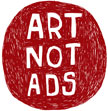June is Internet Safety Month - who knew?
Part III: Have you read your school's acceptable use policy for technology?
I am excited to begin teaching art for a new school this fall. While my excitement builds, the techy teacher in me is also aware that I may face an up hill battle when trying to integrate technology into the art curriculum. Access to computers will be a problem because there is only one computer lab. There is also a full time teacher housed in the lab.
No worries... my motto is "Where there is a will, there is a way!" So before I start looking for grant money and begging my administrator for more space to house all of the cool equipment I will acquire, I must do my homework and find out what my choices and limitations are when it comes to student use of technology and the Internet.
Here is what I have found - it is even available online :-)
"The primary purpose of Tipton County School District's electronic communications network is to support and enhance learning and teaching that prepares students for success. Providing access to technology is an investment in the future of both our students and staff. The Tipton School District believes that electronic communication is a tool for life-long learning, and that access to technology is one of the resources that promotes educational excellence, (Tipton County Student Handbook, p.43)."
Hot dog, this is exactly what I was hoping for! As a teacher, I too, want to use technology to support and enhance learning in art class... Tipton County Schools and me... we are going to be okay.
The above statements were taken from the Student Acceptable Use Procedure for Policy #4.406 for the 2007-2998 School Year. The document also indicates that students and staff should use technology in a "responsible, efficient, ethical, and legal manner..." Furthermore, the handbook lets the students and their parents know that the use of technology is a privilege, and the privilege may be revoked at any time for misuse. Students and parents are also required to agree to the terms and conditions outlined in the policy document and provide signatures.
It is important to have such documentation in place. Parents and students must always be made aware of the expectations for electronic media use while on school property. When using the school's computers, network or the Internet teachers and students should always have educational objectives in mind. Anything else is just not okay in a school setting.
This policy clearly outlines what is and is not acceptable for students. Below, I have listed the specifics with a little less jargon :-)
1) be careful - do not share passwords!
2) hands off other people's data or equipment
3) your emails are not necessarily private
4) big trouble will follow if you access or receive inappropriate material over the Internet
5) the school's technology may not be used to sell stuff
6) you break it, you buy it - that includes programs, hardware and networks
7) do not steal software & for heaven's sake, do not install anything if you haven't been given permission
The only thing that seems to be missing is a statement on plagiarism. In the days of "cut and paste" it is all too easy to acquire text, images and video from the Internet. Use of other people's intellectual property without proper citation is plagiarism - no matter how you look at it. Without proper guidance, students may not even realize that direct use of someone else's work found online is wrong. As teachers, it is up to us to teach our students about the potential ethical and legal problems that surround plagiarism. When developing lessons that require students to conduct research online, teachers must also stress the importance of proper citation. Having a rubric that clearly requires citation for student products will help.
That said, it is important that I teach students to be good stewards of the wonderful world of technology. There are so many awesome tools available for art education and I can't wait to get started. Now... I need some money to purchase equipment... anyone want to make a donation???

 RSS Feed
RSS Feed

